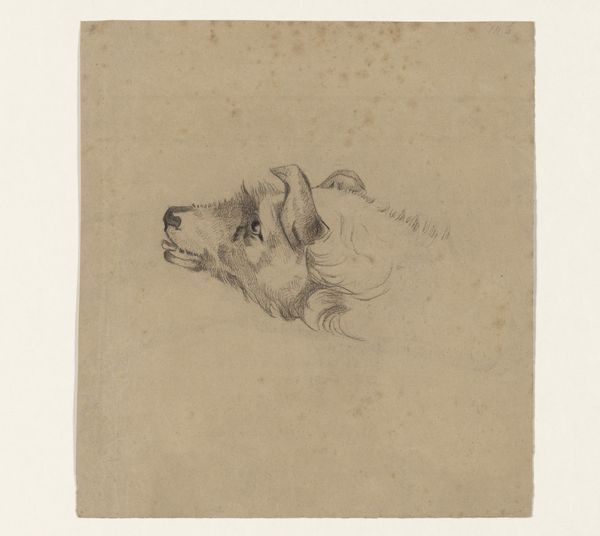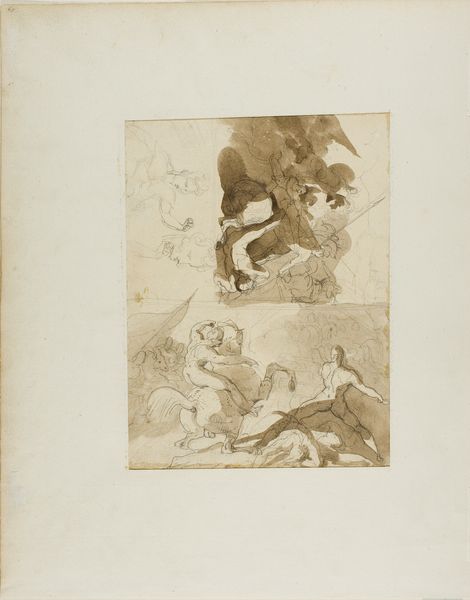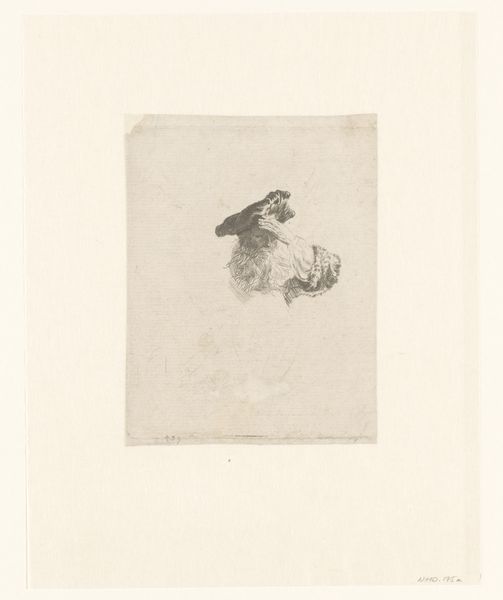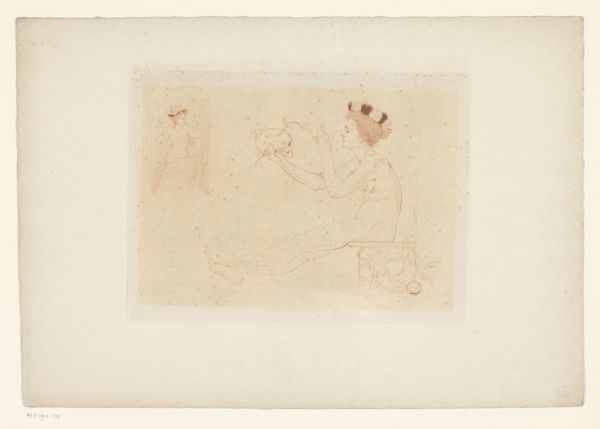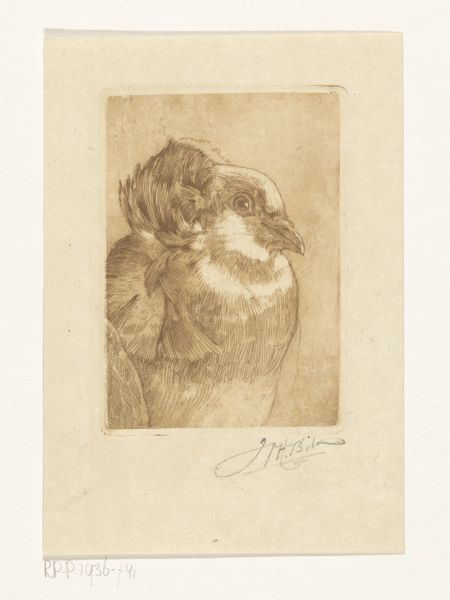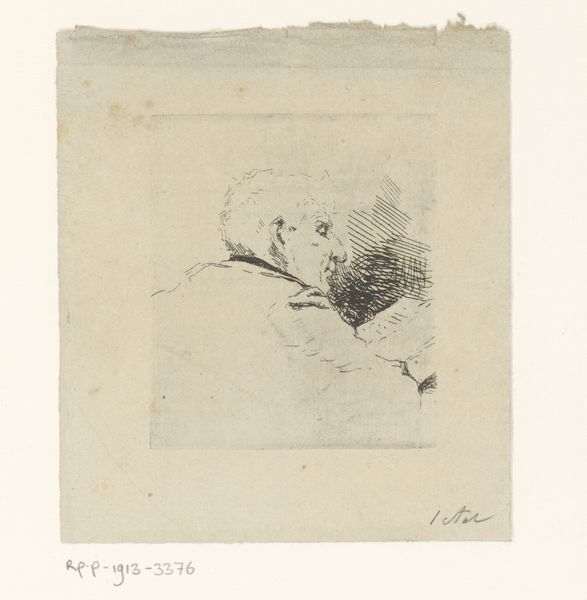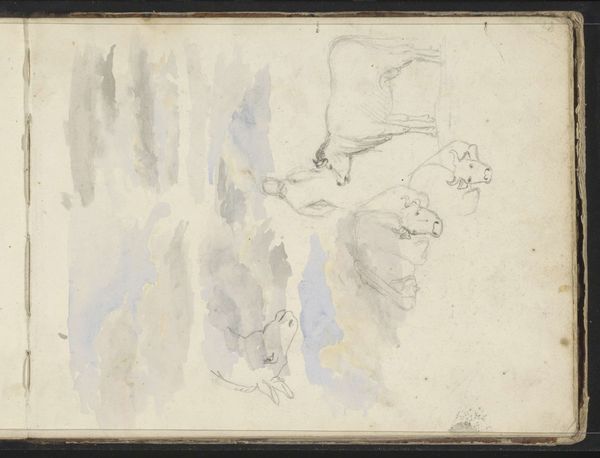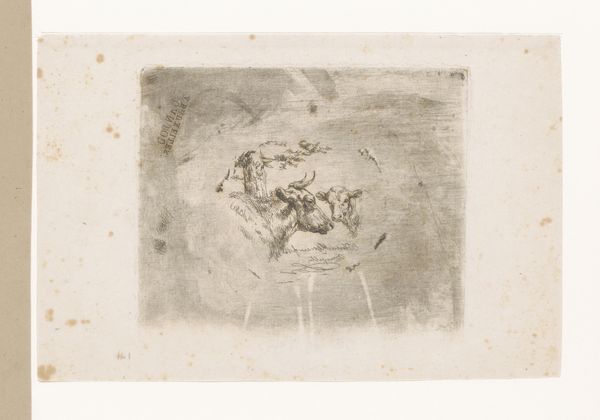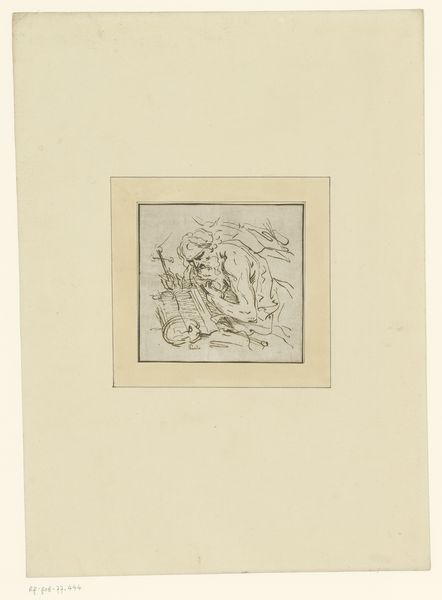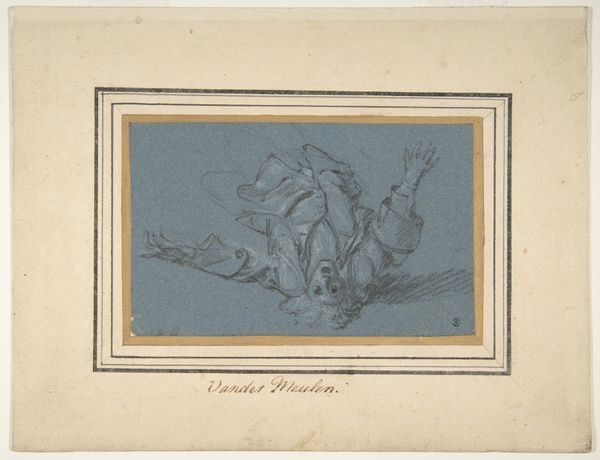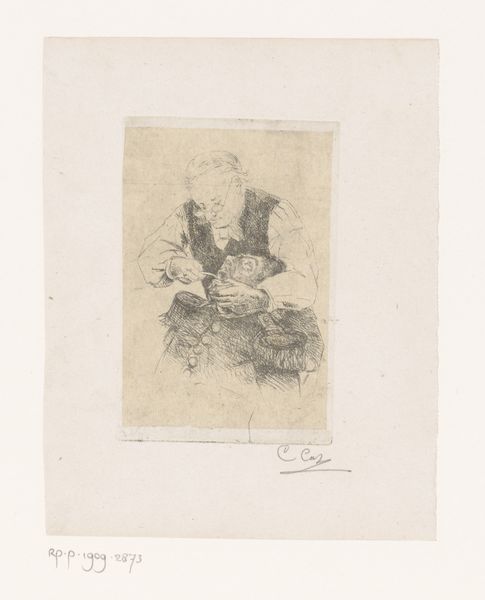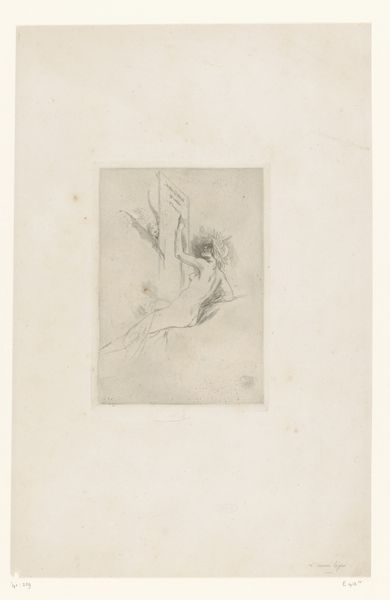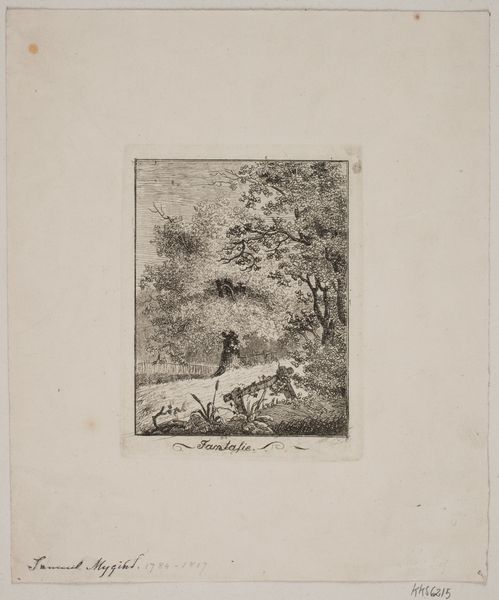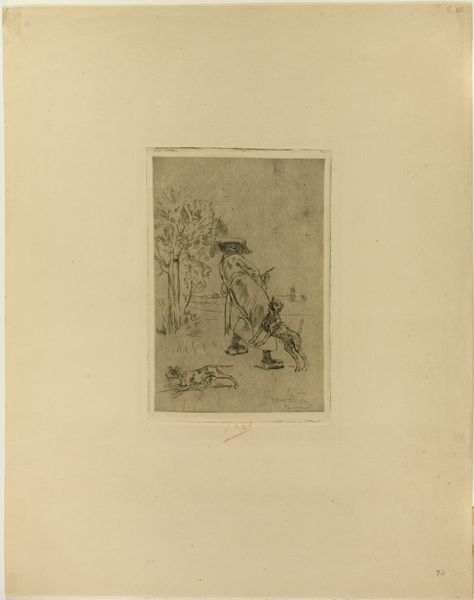
drawing, paper, ink
#
portrait
#
drawing
#
paper
#
11_renaissance
#
ink
Dimensions: 153 mm (height) x 170 mm (width) (bladmaal), 268 mm (height) x 297 mm (width) (brutto)
Editor: So, we are looking at "The Virgin and Child with a Saint or Donor" by Anthony van Dyck, dating back to between 1620 and 1641. It's an ink drawing on paper. The dark hues create quite a somber mood for me. What aspects of this piece stand out to you? Curator: Well, let's consider the materials first. The ink, the paper: where did they come from? Who made them? Think about the labor involved in producing even the *support* for this drawing. Was the paper handmade? What kind of quality was it? Editor: I see, you're saying we shouldn't just focus on van Dyck's artistic skill but also on the broader production chain behind it. Curator: Exactly! And it influences his process. This isn’t oil paint on canvas; it’s ink, a readily available but potentially challenging medium that constrains van Dyck, pushing him to use swift, efficient lines. He cannot create layers and intricate textures in the same way that oil allows, resulting in that more somber effect that you mentioned. Editor: That makes sense. The limited tonal range certainly adds to that feeling. Is it possible the artist selected the specific quality of ink and paper in response to his specific patron or available workshop resources at the time? Curator: Absolutely. Consider the socioeconomic context: what was Van Dyck being paid? The patronage system meant access to quality resources, materials…even time. Was he rushed? The rapid strokes could indicate the urgency or constraint within his commission. That connection between artistic practice, patronage, and materials shapes our interpretation. Editor: This way of thinking really encourages us to question where "art" begins and ends! Thanks! Curator: It's crucial to consider how art making, historically, relied upon complex systems of labour, resource extraction and modes of economic production. We gain a richer understanding by questioning it this way!
Comments
No comments
Be the first to comment and join the conversation on the ultimate creative platform.
